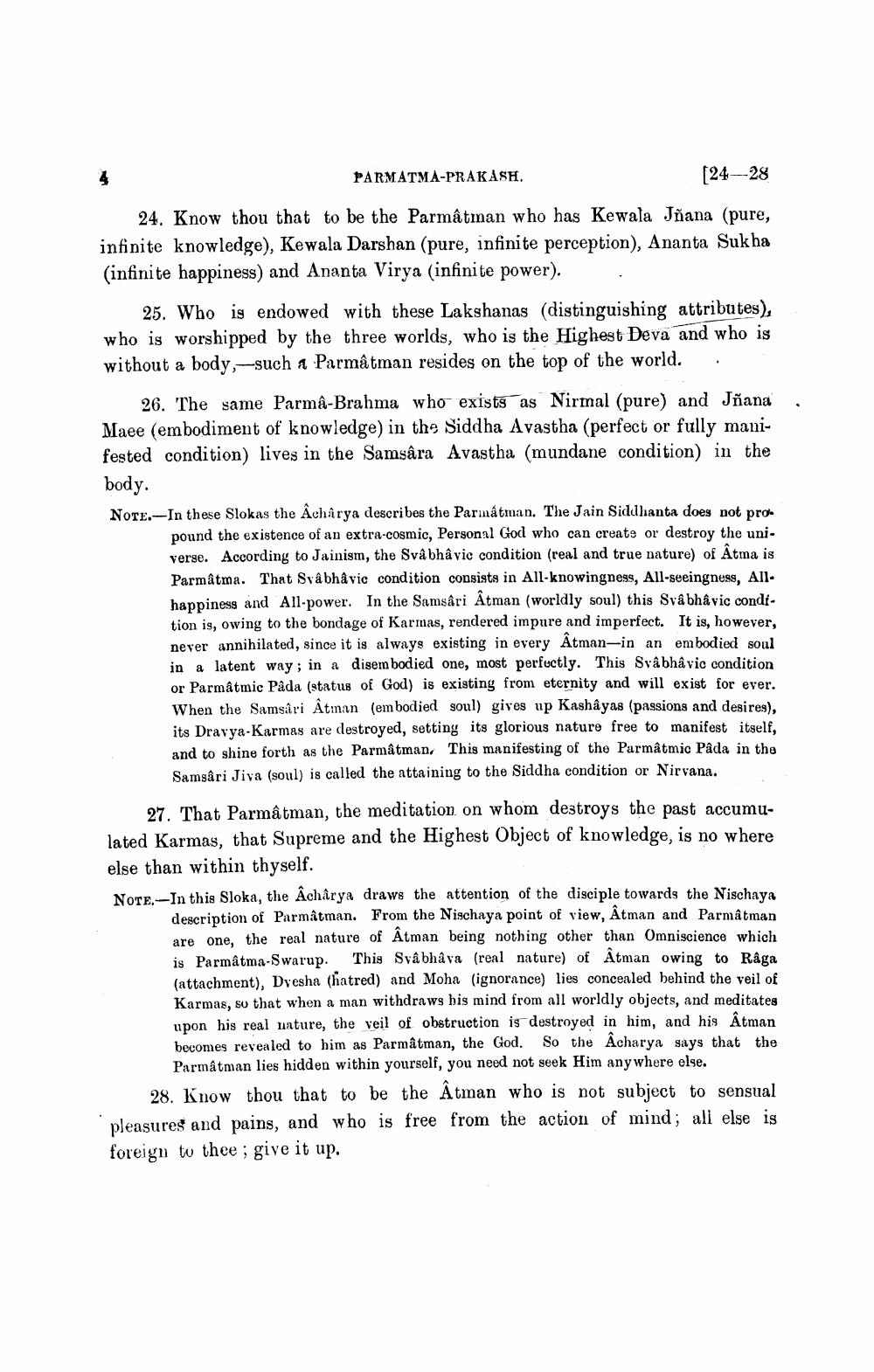________________
PARMATMA-PRAKASH.
[24---28
24. Know thou that to be the Parmâtman who has Kewala Jñana (pure, infinite knowledge), Kewala Darshan (pure, infinite perception), Ananta Sukha (infinite happiness) and Ananta Virya (infinite power).
.
25. Who is endowed with these Lakshanas (distinguishing attributes), who is worshipped by the three worlds, who is the Highest Deva and who is without a body,--such 1 Parmâtman resides on the top of the world. .
26. The same Parmâ-Brahma who exists as Nirmal (pure) and Jñana Maee (embodiment of knowledge) in the Siddha Avastha (perfect or fully manifested condition) lives in the Samsâra Avastha (mundane condition) in the body. NOTE.-In these Slokas the Acharya describes the Parmatman. The Jain Siddhanta does not pro
pound the existence of an extra-cosmic, Personal God who can create or destroy the uni. verse. According to Jainism, the Svâbhâ vic condition (real and true nature) of Atma is Parmatma. That Svábhavic condition consists in All-knowingness, All-seeingness, Allhappiness and All-power. In the Samsâri Atman (worldly soul) this Svâbhâ vic condition is, owing to the bondage of Karmas, rendered impure and imperfect. It is, however, never annihilated, since it is always existing in every Ātman-in an embodied soul in a latent way; in a disembodied one, most perfectly. This Svâbhâvic condition or Parmatmic Pada (status of God) is existing from eternity and will exist for ever. When the Samsári Atman (embodied soul) gives up Kashâyas (passions and desires). its Dravya-Karmas are destroyed, setting its glorious nature free to manifest itself, and to shine forth as the Parmatman. This manifesting of the Parmâtmic Pada in the Samgâri Jiva (soul) is called the attaining to the Siddha condition or Nirvana.
27. That Parmâtman, the meditation on whom destroys the past accumulated Karmas, that Supreme and the Highest Object of knowledge, is no where else than within thyself. NOTE.-In this Sloka, the Acharya draws the attention of the disciple towards the Nischaya
description of Parmatman. From the Nischaya point of view, Atman and Parmatman are one, the real nature of Atman being nothing other than Omniscience which is Parmâtma-Swarup. This Svâbhâva (real nature) of Atman owing to Râga (attachment), Dyesha (hatred) and Moha (ignorance) lies concealed behind the veil of Karmas, so that when a man withdraws his mind from all worldly objects, and meditates upon his real nature, the veil of obstruction is destroyed in him, and his Atman becomes revealed to him as Parmâtman, the God. So the Acharya says that the
Parmatman lies hidden within yourself, you need not seek Him any where else.
28. Know thou that to be the Atman who is not subject to sensual pleasures and pains, and who is free from the action of mind; all else is foreign to thee; give it up.




